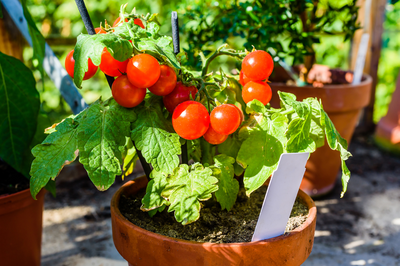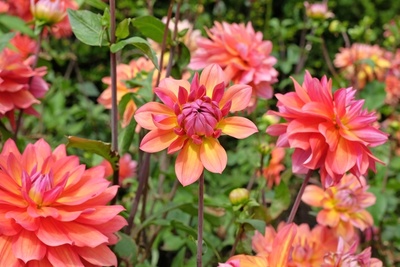
What’s more beautiful than a meadow in full flower? Sowing your own wildflower patch! Sadly, most of our natural fields have vanished, but you can recreate one in your garden. You don’t have to have a lot of space – just a small patch of the flowering meadow will provide gorgeous summer colour for your garden, as well as food for butterflies, bees, little birds and other wildlife. And since you don’t need to mow it every week, you’ll have much more time to sit and enjoy it.
Annual or perennial meadows
Before you start making your meadow patch, it’s essential to decide whether you want an annual or perennial meadow. As the name suggests, yearly meadows contain annual wildflowers like poppies and cornflowers. Perennial fields provide plants that come back years after year, such as ox-eye daisies and cow parsley. Both annual and perennial meadows need a sunny spot, but the main deciding factor is the soil. Annual fields grow best on fertile soil, whereas perennial meadows prefer poor soil where the grass won’t out-compete the flowers.
How to make an annual wildflower meadow
- Sow in early spring.
- Before sowing, clear the soil of weeds, dig it over and rake it level, so that the surface of the ground has a delicate, crumbly texture.
- Sow your annual wildflower mix evenly across the surface and tread it in gently to ensure good contact with the soil.
- If necessary, net the area to protect the seed from birds.
- Water regularly while seeds are germinating and young seedlings are getting established.
- In late summer once flowering has finished, either collect the seed for re-sowing next year or leave the meadow standing until the seeds have fallen naturally.
- Cut the meadow down with a strimmer, scythe or shears and clear away the cuttings.
How to make a perennial wildflower meadow
- Sow in autumn on light soils or early spring on heavy clay soils.
- Before sowing, dig the soil to get rid of weeds and rake it level, so that the surface of the ground has an elegant, crumbly texture.
- Sow your perennial wildflower meadow mix, making sure it includes yellow rattle, a parasitic plant which weakens the grass and stops it smothering the wildflowers. Tread it in gently to ensure good contact with the soil and water regularly while the seedlings are establishing.
- In the first year, cut your patch of a meadow with a strimmer, scythe or shears in midsummer and remove all cuttings.
- In following years, mow in April, then leave it uncut until around August or September. Leave the cuttings lying for a week or so to allow seeds to drop, then clear them away. You may need to mow once or twice in autumn to keep the lawn tidy. Dig out any perennial weeds such as docks, nettles and thistles.
Give yourself and your garden wildlife a treat this year and sow a wildflower meadow patch in the garden. You’ll be reaping the rewards for years to come.




